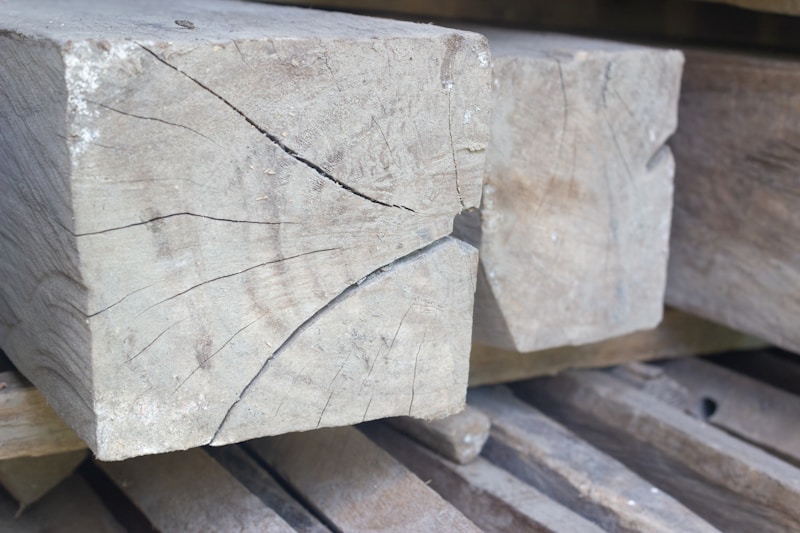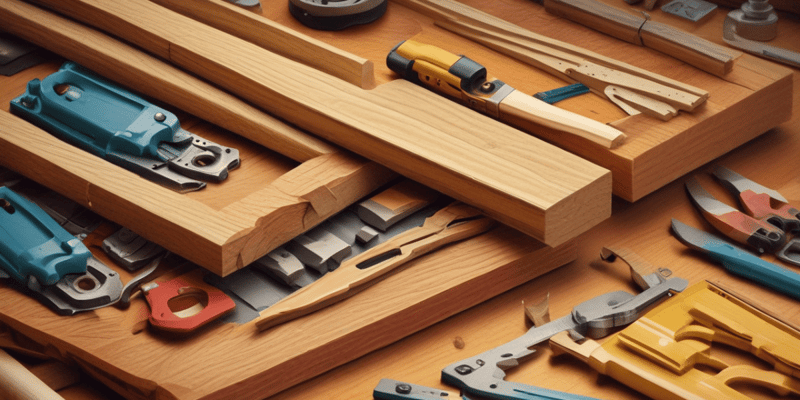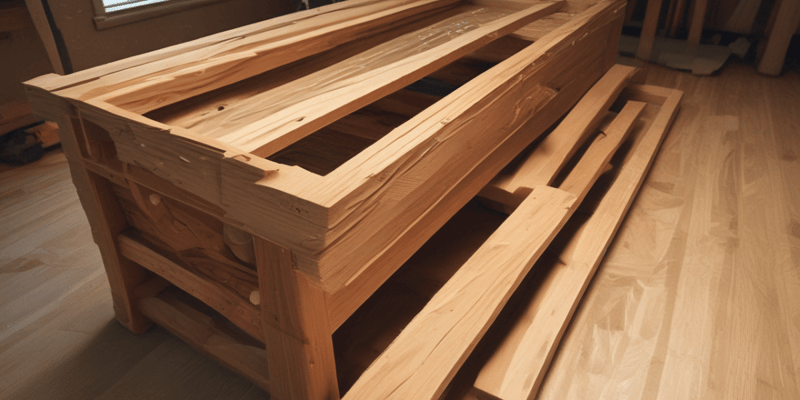Questions and Answers
What is carpentry?
A trade that involves the cutting, shaping, and installation of building materials during construction
What is the percentage of male carpenters in the United States?
98.5%
What is the origin of the word 'carpenter'?
It is derived from the Latin carpentarius [artifex], 'maker of a carriage.'
What is the difference between carpentry in the United States and the United Kingdom?
Signup and view all the answers
What is the typical way carpenters learn their trade?
Signup and view all the answers
What is the purpose of an apprenticeship for carpenters?
Signup and view all the answers
What is the role of carpenters on a construction site?
Signup and view all the answers
What are some of the hazards associated with carpentry?
Signup and view all the answers
What is the difference between a carpenter and a joiner?
Signup and view all the answers
Study Notes
Carpentry is a skilled trade that involves the cutting, shaping, and installation of building materials during construction. Carpentry traditionally involved working with natural wood, but today many other materials are also used. In the United States, 98.5% of carpenters are male, and there were about 1.5 million carpentry positions in 2006. Carpenters are usually the first tradesmen on a job and the last to leave. They can learn this trade through an apprenticeship training or by gaining work experience other than a formal training program. The word "carpenter" is derived from the Latin carpentarius [artifex], "maker of a carriage." In the UK, carpentry is used to describe the skill involved in first fixing of timber items. In the United States, carpentry is historically defined similarly to the United Kingdom as the "heavier and stronger" work distinguished from a joiner who does lighter and more ornamental work. Carpentry requires training which involves both acquiring knowledge and physical practice. Tradesmen in countries such as Germany and Australia are required to fulfill formal apprenticeships to work as professional carpenters. After working as a journeyperson for a while, a carpenter may go on to study or test as a master carpenter. Today, natural and engineered lumber and many other building materials carpenters may use are typically prepared by others and delivered to the job site. Carpentry is often hazardous work. Types of woodworking and carpentry hazards include machine hazards, flying materials, tool projection, fire and explosion, electrocution, noise, vibration, dust, and chemicals.
Studying That Suits You
Use AI to generate personalized quizzes and flashcards to suit your learning preferences.
Description
Test your knowledge of carpentry with our quiz! From the history of the trade to modern building materials and safety hazards, this quiz covers it all. Whether you're a carpentry apprentice or just interested in the craft, challenge yourself with questions on traditional techniques and new technologies. Use keywords such as carpentry, building materials, safety hazards, techniques, and technologies.



